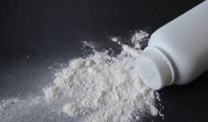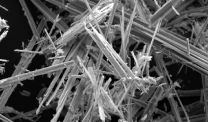Study Finds Link Between Asbestos Exposure and Autoimmune Conditions
Research & Clinical TrialsWritten by Michelle Whitmer | Edited By Walter Pacheco | Scientifically Reviewed By Anna Nowak, Ph.D.

Asbestos is widely known as an occupational hazard, but emerging evidence suggests that prolonged exposure to environmental asbestos could lead to severe autoimmune conditions, according to a study by Montana State University researchers.
Microbiology and immunology research associate Dr. Jean Pfau and a team of researchers discovered the connection to a specific type of asbestos found near the once badly contaminated town of Libby, Montana, and a novel autoimmune disease. The autoimmune condition is associated with collagen thickening of the serum-producing membranes surrounding the lungs.
Pfau, chairperson for the Center for Asbestos Related Disease steering committee, set to study the connection after her team discovered Libby residents “are prone to developing a uniquely presenting asbestos-related autoimmune condition with associated collagen thickening of the serum-producing membranes surrounding the lungs.”
“[Pfau’s] research has been focused on environmental triggers and the inflammatory/autoimmune diseases with which they are associated,” according to CARD.
Autoimmune conditions occur when the body’s immune system attacks its own cells. Results of the study were published in a recent issue of Scientia, a scientific research publication.
Asbestos Contamination in Libby, Montana
Companies began mining vermiculite ore in Libby in the early 1900s. The naturally occurring mineral can develop alongside asbestos, which is dangerous to human health.
Libby vermiculite was widely used in an insulation product known as Zonolite. Unfortunately it was contaminated with the needle-like fibers of amphibole asbestos, also known as Libby Asbestiform Amphiboles, or LAA.
Hundreds of Libby residents have succumbed to asbestos-related diseases, including mesothelioma and a deadly, progressive inflammatory fibrotic lung condition named lamellar pleural thickening, or Libby Disease.
At least one in 10 people in Libby currently have an asbestos-related illness, according to the CARD clinic. Thousands in Libby have been diagnosed with an asbestos-related disease since the contamination began.
After a series of news articles alerted the public to the contamination, the U.S. Environmental Protection Agency began a Superfund investigation. Libby became a Superfund site in 2002.
Thousands of Libby residents and former W.R. Grace & Company mine workers have filed lawsuits against Grace and Montana state agencies for failure to warn them of the dangers of asbestos contamination.
Libby Residents Develop Autoimmune Diseases
Previous studies have shown that people in Libby who developed Libby Disease were also developing autoimmune diseases.
“Simultaneously, systemic autoimmune diseases such as lupus and rheumatoid arthritis were occurring more frequently within this population, along with a high frequency of autoantibodies directed against the nucleus of the cell, so-called antinuclear autoantibodies,” according to Scientia.
“Taken together, this provoked the notion that LAA may elicit an autoimmune response within exposed individuals and suggested that this altered response may lead to Libby Disease.”
Pfau and her team conducted experiments using data and serum from CARD patients who met the study criteria.
“The team discovered several interesting immunological traits exclusively associated with progressive Libby Disease, including a significantly higher incidence of particular autoantibodies and increased collagen production.”
Additional research is needed to learn more about the novel autoimmune condition.






